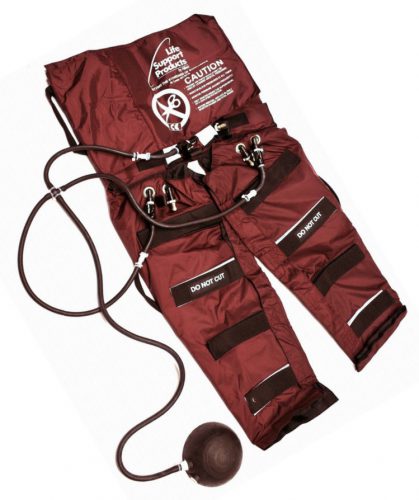I’ve been discussing the little research there is on stay and play vs scoop and run. And now, hot off the press, we have a paper about the ultimate version of scoop and run, the “drive-by ambulance.” This one looks at outcomes in patients who are dropped at the emergency department by private vehicle. This is the most basic form of prehospital care, with no interventions, just transportation. This type of transport is used by parents with their injured children, police who act as very basic first responders in some cities, and on occasion, gang members.
A multi-institutional group of authors used data in the National Trauma Databank to try to answer this question. They used three years worth of data, comparing outcomes from patients with ground EMS vs private transport who were treated at Level I and Level II trauma centers. Only gunshots and stabs were included, and all patients were 16 or older. The authors were focused on only one thing: mortality. This included death in the ED, and a model was developed to adjust risk based on vital signs, injury severity score (ISS), race, and insurance status. Just over 100,000 were included in he final analysis.
Here are the factoids:
- Black and hispanic patients were more frequently transported by private vehicle, but only by about 3%
- White patients were more frequently taken by ground EMS, by about 6%
- Stabs were more likely to be brought by private car than gunshots, 56% vs 44%
- Mean ISS was significantly higher for those transported by ground EMS (10 vs 5.5)
- Unadjusted mortality was lower overall for private vehicle, 2% vs 12%
- The chance of dying in the ED was also decreased in the private transport patients, from 7% to 1%
- Mortality from both gunshots and stabs were also significantly lower (5% vs 9%, and 0.2% vs 3% respectively)
- Once adjusted for risk, the lower mortality with private transport remained, with a 60% risk reduction of death. This persisted in the gunshot and stab cohorts as well.
Bottom line: Wow! Although this study has the usual limitations of using a large external database, it was very well designed to compensate for that. And the degree of improvement in survival is surprising. What this study can’t tell us is why. Certainly, some patients benefit from a little extra time to give fluid or blood, intubate, or provide some other treatments. But the patient with penetrating injuries frequently do not need this, they just need definitive control of hemorrhage. The authors even go so far as to suggest that at-risk populations receive education on “scoop and run” if people they know suffer penetrating injury.
The next step is to tease out which components of the stay and play paradigm are the most valuable, and which contribute to the increased mortality in penetrating injury patients.
In my final post on the series, I will discuss a new multi-center trial from EAST that concentrates on penetrating injury.
Reference: Association of Prehospital Mode of Transport With Mortality in Penetrating Trauma A Trauma System–Level Assessment of Private Vehicle Transportation vs Ground Emergency Medical Services. JAMA Surgery, Published online September 20, 2017.

